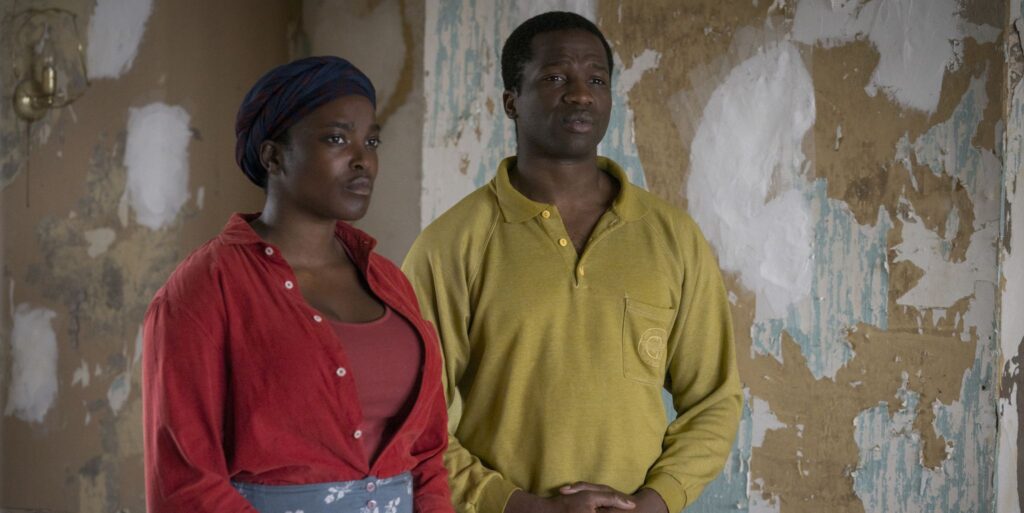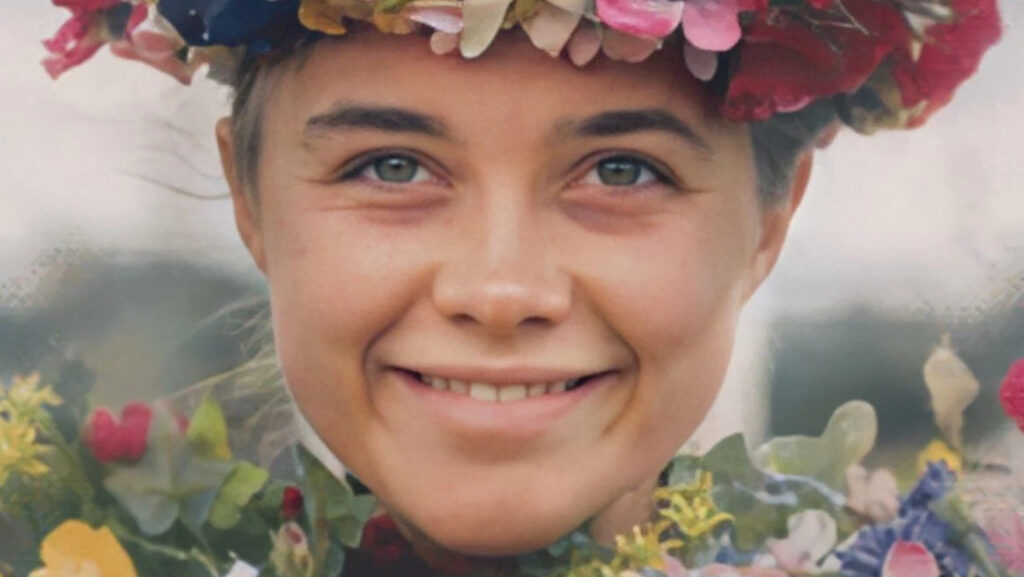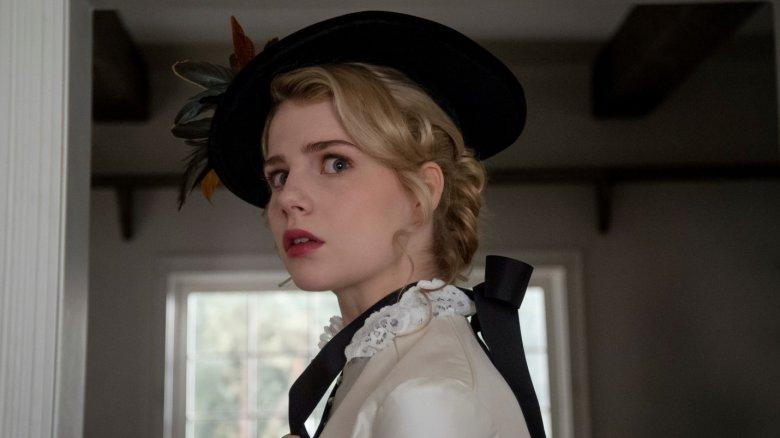When people ask me what books have influenced me as an author, I lose my voice. I would love to be able to rattle off a long list of the classics, the contemporary, experimental authors, literary giants, exciting debuts. Instead, I’m afraid I’m quite gauche. It’s not that I don’t read — I love books, I have always loved books. A beautiful scene, a snappy bit of dialogue, a plot that leaves you breathless or makes you question everything you thought you knew, chef’s kiss. But, if I’m honest, I spent much of my twenties working two, sometimes three jobs, most of which demanded a lot of my energy and when I got home and wanted to unwind, instead of reaching for a book (you try concentrating on a page after an eighteen-hour bar shift), I watched movies. Bad, I know, right? Positively shameful.
But, is it? Films, I quickly learned, have so much to teach about storytelling, if you just pay attention. They have a plot, a scene, characters, arcs. Yes, you won’t get a gorgeous descriptive paragraph, but you will learn how a camera angle can act as a vehicle to show point of view. You will feel what’s left out, or brought in, to a scene. And some scripts are heartrendingly beautiful! There’s a line where poetry and film get crossed, where real magic happens.
Moving into an academic setting (somehow this little bartender has found herself pursuing at PhD at the University of Glasgow) was especially intimidating, because now I was surrounded not only by people who read, but by people who use reading as a way to suss everyone else out. I’m ashamed to admit that I didn’t know who Anne Carson was when I first started my Master’s at Glasgow (I do now, and her essays have become some of my favorites), but I did know how to craft a story, thank you very much to Mike Flanagan. This year, when I had the opportunity to put together my own class, I decided to draw on what I knew best, and built out a course examining clips from horror films in conjunction with texts. We had a lot of fun. My students have told me I’ve ruined casual watching for them forever. Good. Anything can be a classroom, if you let it.
Below are my picks for films, and the texts I paired them with.

Week 1: Setting the Scene
His House (Remi Weekes) and The Witch (Robert Eggers)
Paired with Sonora (Hannah Lillith Assadi) and The Awakening (Kate Chopin)
We began at the beginning, by setting the scene. The opening moments of both His House and The Witch give us so much information without actually saying much. In both stories we have people who are leaving home, for one reason or another. They’re both cast out into new, and sometimes scary, worlds. The immediate development of family bonds, socio-political background, and fear creeping in around the edges, is so well done.
Sonora and The Awakening are two of the most lyrically beautiful books I’ve ever read. In Sonora, Assadi drops us in an Arizona that’s bone-dry and haunted by heat lightning. A beautiful, at times brutal, coming-of-age story that touches on immigration and the layers of histories we carry with us. The Awakening I’ve loved since I first read it in high school. I know Edna Pontellier has her haters, and I completely understand! But I could spend all day reading about gauzy dresses and colorful candies and that warm ocean breeze coming in off the Gulf.

Week 2: Imagery
Midsommar (Ari Aster) and Gretel & Hansel (Oz Perkins)
Paired with ‘The Bacchae that Euripides was Too Scared to Write’ (Khushi Jain) and ‘Young Goodman Brown’ (Nathaniel Hawthorne)
We started this week with the age-old literary question: Does it matter that the curtains are blue? We never actually found the answer, but we did discuss the gorgeous, and sometimes disturbing, imagery in both Midsommar and Gretel & Hansel. Imagery is one of the most powerful tools in a storyteller’s kit. Whether or not you’re using it consciously, you’re tapping into so much deep cultural knowledge and tradition. Both films rely on their viewers’ innate understanding of colors and pictures and folklore tradition to be able to tell a story within a story. There’s always clues you can go back and sift through, which makes them so much fun.
I love Nathaniel Hawthorne, and I’ve really enjoyed introducing him to my students, many of whom are not American. ‘Young Goodman Brown’ is perhaps a bit heavy-handed in its imagery and symbolism, but that’s what makes it accessible for readers not overly familiar with American Puritan culture. Satan and Faith and the Forest, these are universal symbols. In ‘The Bacchae that Euripides was Too Scared to Write,’ Khushi Jain takes an ancient image of the Mad Woman and turns it on its head, to tell a new story. That’s the beauty of imagery — it’s rooted so deeply in our collective psyches, it’s an easy touchstone not only to draw a reader in, but also as a vehicle to explore new worlds.

Week 3: Voice
Lake Mungo (Joel Anderson)
Paired with ‘Recitatif’ (Toni Morrison)
I love Lake Mungo. It’s one of those films that spooks you and rips your heart out at the same time. Told in a documentary style, this is the story of a family grappling with grief after the accidental drowning of sixteen-year-old Alice Palmer. Like all families, the Palmer’s have secrets, some of which slip out during the making of this documentary. There are ghosts and psychics, dreams and shadows and too many twists to keep track of. Fractured as they are by the mock interview setup, each character’s voice bleeds through, or in the case of Alice’s, is stark in its silence. Lake Mungo is a beautiful study in how we tell stories, who we tell them to, and what happens when we’re forced to look closer than we’d like.
‘Recitatif’ is so interesting because it’s a story about race in America, that never actually pinpoints who in the story is what race. Through the vehicle of the two girls, Twyla and Roberta, Morrison is playing with all our stereotypes of what it means to be Black or white in America, and really challenging her readers. She can do this because she’s writing in 1st Person, held close, which doesn’t demand identifying details the way another POV might. It’s such a masterfully told story.

Week 4: Building the Background
The Wind (Emma Tammi) and The Killing of a Sacred Deer (Yorgos Lanthimos)
Paired with Persuasion (Jane Austen) and ‘The Fall of the House of Usher’ (Edgar Allan Poe)
What does romance literature have in common with horror? A lot, actually! Racing hearts, a constant buzz of anticipation, subtle power games. Is sitting in the same room with your crush really that much different than avoiding looking at the dark corners in your house? What both The Wind and ‘The Fall of the House of Usher’ do so well is build up that creeping dread in the background. Something is always tilted off to the side, even when the scene is calm. The loneliness of our narrator, trapped in an isolated place and often in their own mind, is done so brilliantly in both works — is there really something supernatural going on? Or is this just the viewpoint of a disturbed mind? Both stories creep under your skin and stay there.
Persuasion and The Killing of a Sacred Deer take a slightly different tact — pinning us down in long moments of discomfort, forcing the audience to sit witness to subtle mind games. So much is said in silences; the shared history of our main characters has this weight that almost takes form and walks around the room itself. You just want to shake them all and tell them to just, for the love of God, speak to each other, make a decision, do anything! Brilliant.

Week 5: Body Grotesque
Suspiria (Luca Guandagnino) and Saint Maud (Rose Glass)
Paired with ‘Poetic Sexploration’ (Tawnya Renelle) and The Only Good Indians (Stephen Graham Jones)
How far can you push a reader, and when do you look away? This was, after all, a class about horror films, so we did spend one week talking about the facet of horror that disturbs me most — body horror. It’s something I’ve thought a lot about, writing about murder. So, my poor little class suffered with me as we watched Olga’s gruesome death dance in the 2018 remake of Suspiria, and Maud writhe around on the floor in ecstasy in her titular film, Saint Maud.
Paired with these clips was Tawnya Renelle’s raw and honest, ‘Poetic Sexploration,’ in which she recounts every person she’s ever had sex with (83 by the time I purchased the collection, This Exquisite Corpse), and we read a bit of a personal favorite of mine: Stephen Graham Jones’s The Only Good Indians, in which the author gives you no warning before he springs all sorts of horrible violence on his characters, and then quickly swings away so you’re left breathless and very certain that you did not just read what you thought you read. The trick, with all of these pieces we found, was to feel the pulse of your audience – morbid curiosity is a powerful tool. So too, is the bravery it takes to (literally) bare yourself to the world.

Week 6: Creating Space
I Am the Pretty Thing That Lives in the House (Oz Perkins) and The Wailing (Na Hong-jin)
Paired with ‘The Two Headed Calf’ (Laura Gilpin), Whereas (Layli Long Soldier), and Girl With a Pearl Earring (Tracey Chevalier)
Sometimes your reader needs a little bit of space to look around and breathe, and so did my class, so we spent Week 6 talking about how to create space within our stories. I Am the Pretty Thing That Lives in the House is such a gorgeously quiet film. It’s marked by long shots, slow-moving ghosts, a sort of creeping dread. The overall effect is almost that of a breath being let out. The Wailing plays with space in a different way. We watched a clip of the film that was about ten minutes long, of a shaman performing an exorcism ritual. The scene is a lot of loud noise and chanting and dancing, juxtaposed against the sometimes shocking quiet of a man alone in his home. Much of the film up to this point is driven by action – it starts almost as a police procedural, before shifting to something demonic. That ten minutes of dance and singing creates a breath in that it’s a place for the audience to shake off some of the tension they’ve been carrying in their shoulders. It’s the pause that allows you to gather yourself before the emotional chaos of the climax.
I chose my three readings because they all build space in different ways. ‘The Two Headed Calf’ is just such a lovely poem, a quiet moment held in the palm of your hand. Girl With a Pearl Earring is similar, in that it’s filled with silences: silent people, a silent house, all those closed doors and secrets. There’s a real sense of space to the text, that allows the reader to wander, wide-eyed, throughout. In Whereas, Layli Long Soldier creates space with what she leaves out — in some poems that’s punctuation or a clear ending (an exhale), in others, she pounds in the painful history of the United States’ relationship to Native Americans tribes by visually leaving space within the poem for her reader to fill in.

Week 7: A Story is an Onion
The Haunting of Hill House and Midnight Mass (Mike Flanagan)
Paired with Nel’s monologue from The Haunting of Hill House
He’s not really art horror, but I love what Mike Flanagan does with a script. The notion of time, the meaning of a haunting, the arc of a narrative, Flanagan takes everything we think we know about how storytelling works and breaks it. Nel’s monologue at the end of The Haunting of Hill House is almost a poem, building on itself bit by bit until we have a brutally poignant meditation on the nature of family and love. We studied his tracking shots in Midnight Mass, and talked about how to move with a character; how Flanagan uses rapid, clipped dialogue and just enough sparse background noise, coupled with a camera in constant motion, to create a tight scene, before spinning the viewer back out into the wider setting. I could go on for days about how much I love Flanagan’s work, but I’ll simply close with: Go watch him. He’s a master at what he does.

Week 8: Putting it all Together
You Won’t Be Alone (Goren Stolevski) film and script
I first watched this film while on a transatlantic flight from the US back to the UK, and, it ruined me. A gorgeous study in just what it means to be human through the eyes of a mute girl who’s transformed into a witch by a storybook crone. This film really does tie everything together — the scenes and imagery are textbook Grimm’s fairytale (if a touch more grounded in the real world); the girl’s voice remains very much her own, even as she gathers other stories to her; there’s body horror and tension (will anyone discover she’s a witch?); and it’s all tied together by a script that’s nothing short of pure poetry, building out breaths and soft moments for the audience, encouraging our own curiosity and introspection. I cried shamelessly on a packed airplane while watching it.
***


















